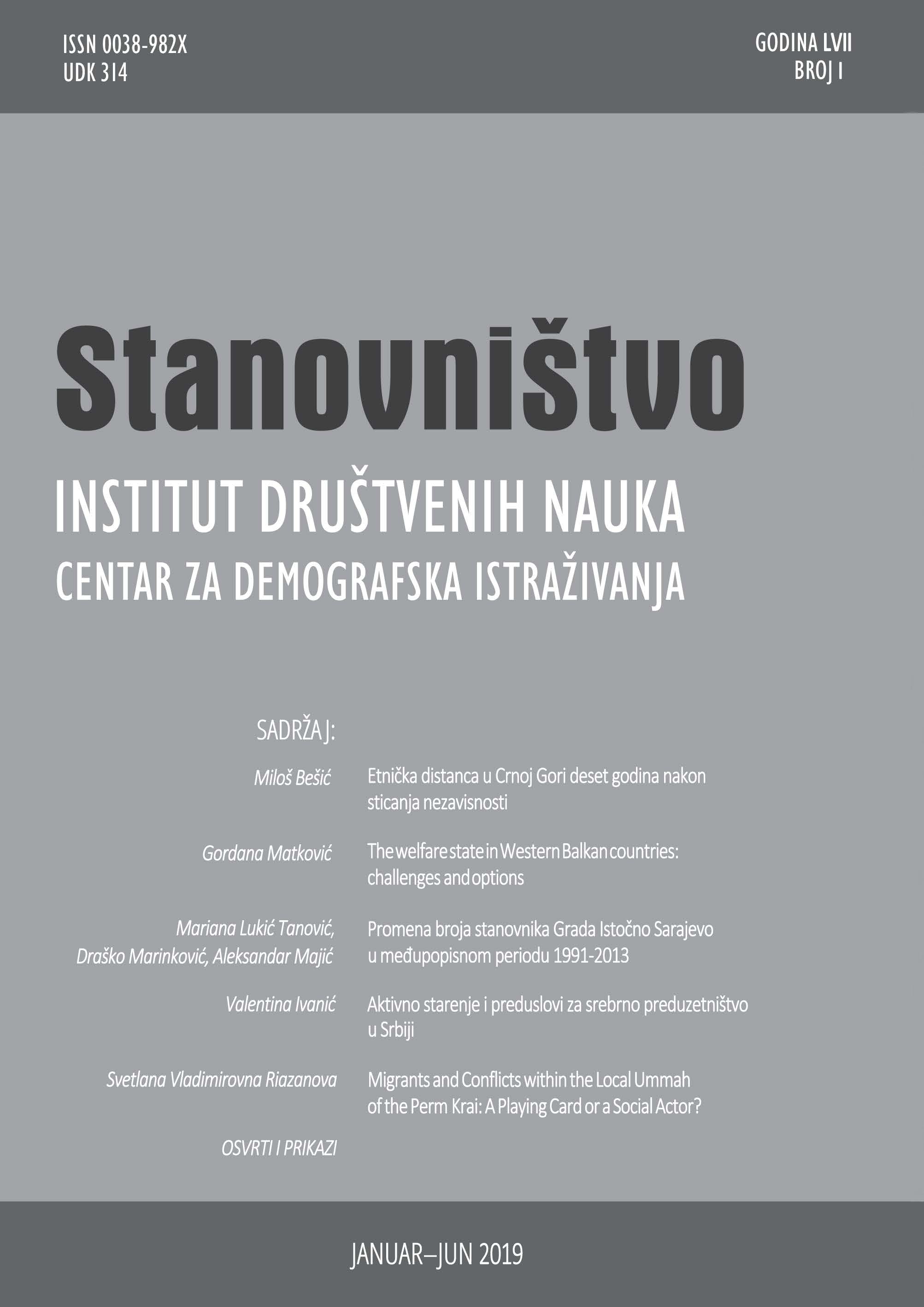Aktivno starenje i preduslovi za srebrno preduzetništvo u Srbiji
Active aging and prerequisites for silver entrepreneurship in Serbia
Author(s): Valentina IvanićSubject(s): Social Sciences, Micro-Economics, Demography and human biology, Economic development, Human Resources in Economy
Published by: Институт друштвених наука
Keywords: active aging in the EU; silver entrepreneurship; economic prerequisites for silver entrepreneurship; cultural prerequisites for silver entrepreneurship, Serbia
Summary/Abstract: This article identifies links between the active aging process and the “silver econ-omy” at the European Union level. It also defines economic and societal prerequi-sites for “silver entrepreneurship”, which Serbia, as a small, transition, factor-driven economy can exploit. Previous research has shown there are two ways in which older people can be involved in the silver economy: as producers (“silver entrepre-neurs”), or as consumers. Demand for data about silver entrepreneurship has been driven by macroeconomists, notably those devoted to issues around fiscal instability, rather than by the urgent need to consider this phenomenon as one driven by growth and competitiveness.Existing research has identified two forms of silver entrepreneurship: oppor-tunity-based and necessity-based. Oppor-tunity-based silver entrepreneurship is inherent in economies with high GDP per capita. Across the EU-28 nations, the average GDP per capita in purchasing power standard (PPS) in 2017 was record-ed as 29,299 EUR. This figure was used as a proxy measurement of living standards. However, in the smaller transition economies of Southeast Europe, this fig-ure is a lot lower. In 2017, the average GDP per capita in PPS in Serbia was 4,800 EUR.In order to identify the economic fac-tors necessary for silver entrepreneurship at both the company and individual levels in Serbia, we derived data from a range of sources. These included the Statistical Office of the Republic of Serbia, the La-bour Force Survey 2017, the Pension and Disability Insurance Fund, and the Minis-try of Trade, Tourism and Telecommuni-cations.Data relating to the Uncertainty Avoid-ance Index for Serbia (UAI) were derived from research organized by the Regional Cooperation Council and GfK. The author then calculated the UAI for Serbia. The collected data showed how the UAI for Serbia has changed over time, declining from a value of 92 in 1993 to 60 in 2016. Statistics about pensions in Serbia show that only military retirees, who have an average monthly pension of 46,494 RSD, can cover the minimum consumer basket costs of 36,090 RSD.
Journal: Stanovništvo
- Issue Year: 57/2019
- Issue No: 1
- Page Range: 71-95
- Page Count: 25
- Language: Serbian

